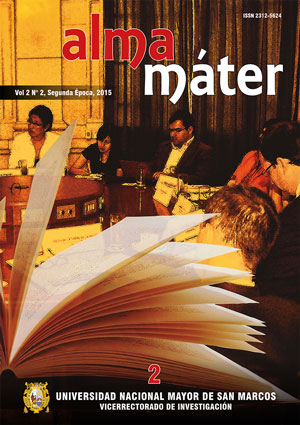LLANKAY, YACHAY, SONQOY HISTORICAL VALUES OF THE PEOPLE IN THE TAWANTINSUYO
Keywords:
Idle, Thief, Fibber, Education, Work, Love, Tawantinsuyo, Asiatic mode of production, Moral, Axiology, Epistemology of Social Sciences.Abstract
This article seeks to uncover the ideological manipulation for over five centuries of domination is still produced in Peru, practiced in all forms of social consciousness. The article seeks to compare the false values atributed a our ancestors: the “ama llulla, ama sua, ama q’ella”, with the concrete historical-social practice we have lived and live in society with the aim of highlighting the aforementioned manipulation. The author suggests, rather, that in the early Llankay, Yachay, Sonqoy, morality authentic values of Tawantinsuyu is based given that live daily in countless facts of everyday life as well as when interpreted with the theory knowledge, diverse stories and testimonies of the Andean oral tradition and anthropological studies, ethnohistorical, historical and philosophical studies now with critical awareness, allowing rescue the authentic culture of our nation and the Andean world. The study therefore seeks to demonstrate the validity of the principles based on work, education and love, as genuine the Inca culture. Llancay, Yachay and Sonqoy are legitimate moral values of our forefathers and axiological them remain valid in peasant communities and middle classes of Peru and parts of Latin America.Downloads
Published
Issue
Section
License
Copyright (c) 2015 Manuel Góngora Prado

This work is licensed under a Creative Commons Attribution-NonCommercial-ShareAlike 4.0 International License.

Alma máter segunda época by Vicerrectorado de Investigación y Posgrado is licensed under a Creative Commons Reconocimiento-NoComercial-CompartirIgual 4.0 Internacional License.
Creado a partir de la obra en http://revistasinvestigacion.unmsm.edu.pe/index.php/alma/index.
AUTHORS RETAIN THEIR RIGHTS:
a. Authors retain their trade mark rights and patent, and also on any process or procedure described in the article.
b. Authors retain their right to share, copy, distribute, perform and publicly communicate their article (eg, to place their article in an institutional repository or publish it in a book), with an acknowledgment of its initial publication in Alma máter segunda época.
c. Authors retain theirs right to make a subsequent publication of their work, to use the article or any part thereof (eg a compilation of his papers, lecture notes, thesis, or a book), always indicating the source of publication (the originator of the work, journal, volume, number and date).



